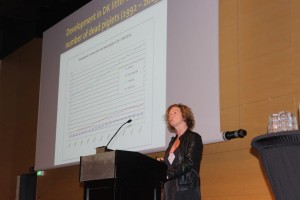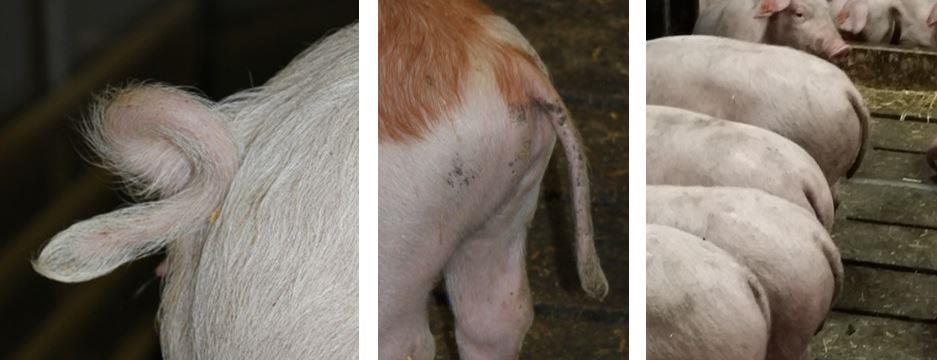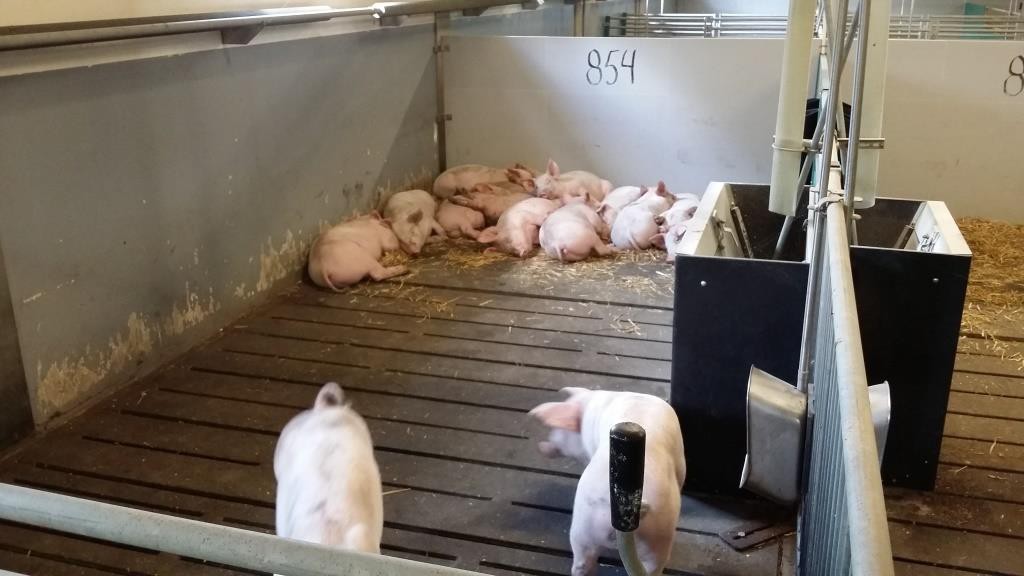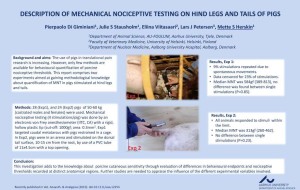On 29 – 30 April 2015 Danish Minister for Food, Agriculture and Fisheries, Dan Jørgensen hosted an international conference “Improving Pig Welfare – what are the ways forward?“.
During the two-day conference, top academics, experts and political stakeholders from around the world debated and worked to prepare the way forward in improving pig welfare in Europe and ultimately in the world.
Below you find ‘soundbites’ from conference presentations, all more or less related to the subjects of study in the FareWellDock project.
The Welfare Challenges Facing The Pig Sector
Peter Stevenson, Chief Policy Advisor of Compassion in World Farming, UK
Interview (video):
We have created a society where farmers’ margins are so low that they often have no choice but to have very low welfare (P. Stevenson)
We need to find a way in which we can make moving to higher welfare economically viable (P. Stevenson)
Presentation:
The EU should protect farmers from low welfare imports (P. Stevenson)
Most pigs in EU are given no enrichment or ineffective objects such as chains. … Plastic chewing sticks & balls are not effective enrichment (P. Stevenson)
An intact curly tail may well be the single most important animal-based welfare indicator in finishing pigs (EFSA update 2011, cited by P. Stevenson).
The average benefit of raising uncastrated pigs is around €5 per pig due to better feed conversion (EC, 2013, cited by P. Stevenson)
Consumers can drive animal welfare improvements – Don’t keep them in the dark (P. Stevenson).
Could Animal Production Become a Profession?
David Fraser, Professor, University of British Columbia, Canada
Interview (video):
Could pig producers function more like professionals and less like an industry? Professionals set their own standards. (D. Fraser)
Presentation:
The best common people are the agricultural population, so that it is possible to introduce democracy as well as other forms of constitution where the multitide lives by agriculture or by pasturing cattle. Aristotle, “Politics” (cited by D. Fraser).
In the past half century, animal agriculture in the U.S. has been taken over by corporations, turning family farms into factory farms (Farm Sanctuary, 2009, cited by D. Fraser).
Farm animal health levels: Piglet deaths: 0-50%; bursitis: 0-83%; sow mortality: 0-20%; dairy cow lameness 0-85%; broiler lameness: 0-90% (D. Fraser).
Animal welfare reforms have been modeled on worker welfare legislation that regulated the physical environment and exposure time in factories (D. Fraser).
Shifting animal production toward a professional model is a more promising approach to improving animal welfare and maintaining public trust in animal producers (D. Fraser).
Assessment and Alleviation of Pain in Pig Production
Sandra Edwards, Professor, Newcastle University, UK

Sandra Edwards, Professor, Newcastle University, UK
Interview (video):
We need a very strong ethical justification for continuing farm-management procedures which are painful to animals, and look very actively for ways to reduce their necessity (S. Edwards)
Presentation:
Is castration necessary? Not all countries now think so (Backus et al., 2014), but sometimes it may be (S. Edwards)
What links castration, tail docking and gastric ulcers in pigs? Pain (S. Edwards)
Tail docking: Historically (and often currently): A surgical procedure carried out on young piglets with no pain relief (S. Edwards)
Does Tail docking Cause Pain? Many farmers believe not (or only insignificant) (S. Edwards)
30% of finishing pigs and 50% of culled sows have gastric sulcers (score >6). Gastric ulcers are acutely painful in humans. (S. Edwards)
Conclusion: The occurrence of pain compromises animal welfare
– It must be actively addressed.
– “Suppress, Substitute, Soothe”
(S. Edwards)
A reliable method for on-farm pain assessment is needed (S. Edwards)
Neonatal Piglet Mortality in Relation to Sow Farrowing Environment
Lene Juul Pedersen, Senior Researcher, Aarhus University, DK

Lene Juul Pedersen, Senior Researcher, Aarhus University, DK
Interview (video):
Genetic selection for increased littersize in Danish pig production has resulted in problems with piglet mortality that need to be solved, either by changing the breeding goal (to heavier piglets) and/or intensified piglet care (L.J. Pedersen).
Increased piglet mortality is not an innate problem of farrowing pens where sows can freely more around (L.J. Pedersen).
Presentation:
Piglets are born in a thermally insufficient environment (L.J. Pedersen).
Animal welfare in organic pig production
Jan Tind Sørensen, Professor, Aarhus University, DK
Interview (video):
Organic pig production does well on naturalness, welfare perception and low antibiotics use, but needs to solve problems with piglet mortality, endoparasites and castration (J.T. Sørensen).
Scientists cannot solve animal welfare. Politicians either. We need to collaborate to improve pig welfare (J.T. Sørensen).
Presentation:
Lameness prevalense in organic sow herds is higher during summer (Knage-Rasmussen et al 2014, cited by J.T. Sørensen).
High piglet mortality in organic pig production (Sørensen & Pedersen 2013, cited by J.T. Sørensen)
Organic pigs may be more resistant to Salmonella infections
(Bonde & Sørensen 2012, cited by J.T. Sørensen)
The Intelligent Pig Barn
Anders Ringgaard Kristensen, Professor, University of Copenhagen, DK
Interview (video):
Sensor technology is one of the ways forward in pig production (A.R. Kirstensen)
Presentation:
The intelligent pig barn – PigIT – Welfare problems considered: diarrhea, fouling and tail biting (A.R. Kirstensen).
The Danish Pig Welfare Action Plan
Per Henriksen, CVO, Danish Veterinary and Food Administration, DK
The use of animal welfare indicators
Jeremy Marchant-Forde, Research Animal Scientist, USDA-ARS, USA
Interview (video):
Scientists in the EU interact more with policymakers, while the US has closer links with producers (J. Marchant-Forde)
Presentation:
From 2005 to 2050 the global demand for meat will raise: poultry from 82 to 181M tonnes, beef from 64 to 106M, and pork from 100M to 143M tonnes (43%) (J. Marchant-Forde).
The Danish Animal Welfare Index Project
Björn Forkman, Professor, University of Copenhagen, DK
Interview (video):
The Danish Animal Welfare Index is animal-based, compares welfare across years and is based on a definition of welfare in terms of feelings (B. Forkman)
The Danish pig welfare conference showed an astonishing interest in pig welfare (B. Forkman).
Presentation:
“Happy pigs are dirty” (B. Forkman)
Ethical Meat Production & Consumer Response
Athanasios Krystallis Krontalis, Professor, Aarhus University, DK
Interview (video):
What people believe, sometimes is irrevant to the way they behave (A.K. Krontalis)
The social desirability effect implies that we tend to stay on the safe side, hiding what we really believe about something and simply reproducing stereotypes. So people have difficulty saying I don’t care about animal welfare (A.K. Krontalis).
It will take a lot of effort to reveal the real opinions of people generally [regarding animal welfare] (A.K. Krontalis).
Presentation:
29.149 food products launched with the claim “ethical” on their description (top-10 categories, all European countries) (Mintel Gnpd, Apr. 2013 cited by A.K. Krontalis).
Around 4,000 new food product launches with the term “Animal welfare” in their description. Mintel Gnpd, Apr. 2013 (cited by A.K. Krontalis).
People with weak attitudes to pig production eat somewhat more pork (A.K. Krontalis).
Not eating pork at all is not related to being critical to pork production (A.K. Krontalis).
consumers seek more information about production methods to make informed choices (Harper & Henson, 2001, cited by A.K. Krontalis)
In a EU survey (2005) consumers stated they are very rarely or never able to identify meat products from sustainable production methods (cited by A.K. Krontalis)
Ethical meat can be achieved by:
* Optimization of current production (consumer-driven)
and/or
* Development of new (technology-driven) production (i.e. in-vitro or insect-based), with questionable social acceptance potential (A.K. Krontalis).
Good welfare is good business
Jeremy Cooper, CEO, Freedom Food and Kate Parkes, Senior Scientific Officer, RSPCA, UK
Good welfare is good business (J. Cooper, CEO Freedom Food)
Freedom Food: > 3.5k members, 1 billion terrestrial farm animals, > 2k labelled products, almost 1/3 of UK pigs, 50% of UK eggs, > 70% of Scottish salmon (J. Cooper)
The effects of stockperson education and training on farm animal welfare
Paul Hemsworth, Professor, University of Melbourne, Australia
Attitudes tend to direct our behaviour or, at least, our intended behaviour (P. Hemsworth).
The best way to predict how stockpeople will interact with their animals is by knowing what their attitude is toward the activity itself (P. Hemsworth).
To target ‘stockmanship’ both technical and behavioural training of stockpeople are necessary! (P. Hemsworth).











